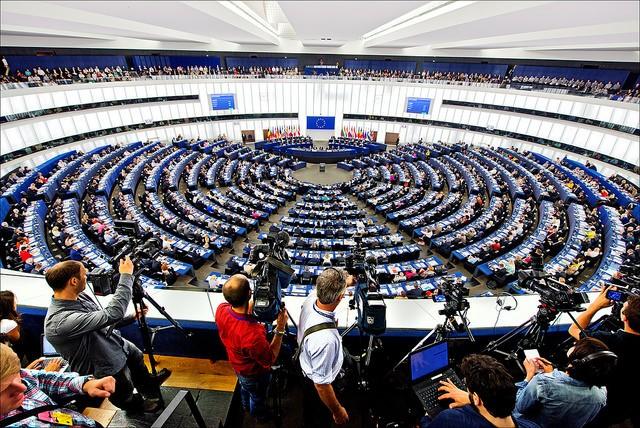
This week, by an almost 600-vote margin, the European Parliament voted to approve the global climate deal negotiated at last year’s COP21 climate talks in Paris. The European Union ratification makes the United Nations Framework Convention on Climate Change (UNFCCC) Paris Agreement legally binding.
The 610-38 vote pushed the world over the threshold that required 55 of the agreement’s signatories responsible for at least 55 percent of the world’s greenhouse gas emissions to ratify the agreement in order to enter it into force. India ratified the agreement on Sunday, nudging it even closer to the finish line. And with the EU signing on to the agreement, along with member states including France and Germany, backers of the climate framework say this gives global action on climate change momentum with the COP22 talks in Marrakesh, Morocco, starting on Nov. 7.
The ratification comes at a time when the evidence suggests limiting climate change below a 2-degrees Celsius increase this century may fall short of the aggressive course of action needed. Last week, researchers at Hawaii’s Mauna Loa Observatory concluded that the concentration of carbon dioxide in the earth’s atmosphere passed that psychological mark of 400 parts per million (PPM). And while progress has arguably been made on challenges such as repairing Earth’s oceans and halting deforestation, the world faces a massively long to-do list as it seeks to reduce carbon emissions while supporting a planet that could be home to 9 billion people by 2050.
The evidence also suggests that while countries and global organizations say they are committed to working together on climate change, the reality could be starkly different from what is printed on paper and signed. The World Bank, for example, has long been a vocal supporter of reforms designed to tackle climate change. But a few months after the international financial institution tasked with fighting global poverty urged Asian countries to scale back their coal-fired power plant projects, a social justice NGO accused the World Bank of secretly financing a coal boom across the region.
To that end, backing public statements with tangible action is by far the largest challenge the global community faces as it seeks to reduce climate change risks. The hard work, in fact, is just beginning.
One of the hurdles on stalling climate change is that some of the COP22 provisions do not launch for several years. So-called “facilitative dialogues” are set to begin in 2018. During those talks, the U.N. will evaluate countries’ efforts on reducing greenhouse gas emissions and other efforts to mitigate climate change risks. Another assessment will occur five years later.
In the meantime, countries must update their pledges on carbon emissions reductions by 2020. Unfortunately, such a long and drawn-out process reinforces the stereotype of the U.N. as a body in which global leaders gallivant around the globe making public statements while driving little progress.
And to many climate experts, the Paris Agreement goals, while noble, might not be effective. They say the world’s largest carbon emitters must take bolder action – and that includes countries such as India and China, the latter of which is now the world’s manufacturing base. If developed countries want emerging economies to curb their carbon emissions, the richer countries will most likely have to pay, and that will not curry favor with many voters. Add the risk that successors to leaders such as Barack Obama or Justin Trudeau could ignore the COP22 directives with little recourse, and the future of these plans is still very much in doubt -- even if they are technically legally binding.
Nevertheless, there are some hopeful signs. Clean-energy technologies are becoming more scalable and cheaper, which will allow more countries to expand their deployment. Younger citizens seek faster action on climate change, and their voice and votes amplify their message. Finally, the business community realizes it needs to pay attention to environmental challenges if companies are going to stay viable in the long run – and they have the capacity necessary to help countries meet their individual targets.
Image credit: European Parliament/Flickr

Leon Kaye has written for 3p since 2010 and become executive editor in 2018. His previous work includes writing for the Guardian as well as other online and print publications. In addition, he's worked in sales executive roles within technology and financial research companies, as well as for a public relations firm, for which he consulted with one of the globe’s leading sustainability initiatives. Currently living in Central California, he’s traveled to 70-plus countries and has lived and worked in South Korea, the United Arab Emirates and Uruguay.
Leon’s an alum of Fresno State, the University of Maryland, Baltimore County and the University of Southern California's Marshall Business School. He enjoys traveling abroad as well as exploring California’s Central Coast and the Sierra Nevadas.














